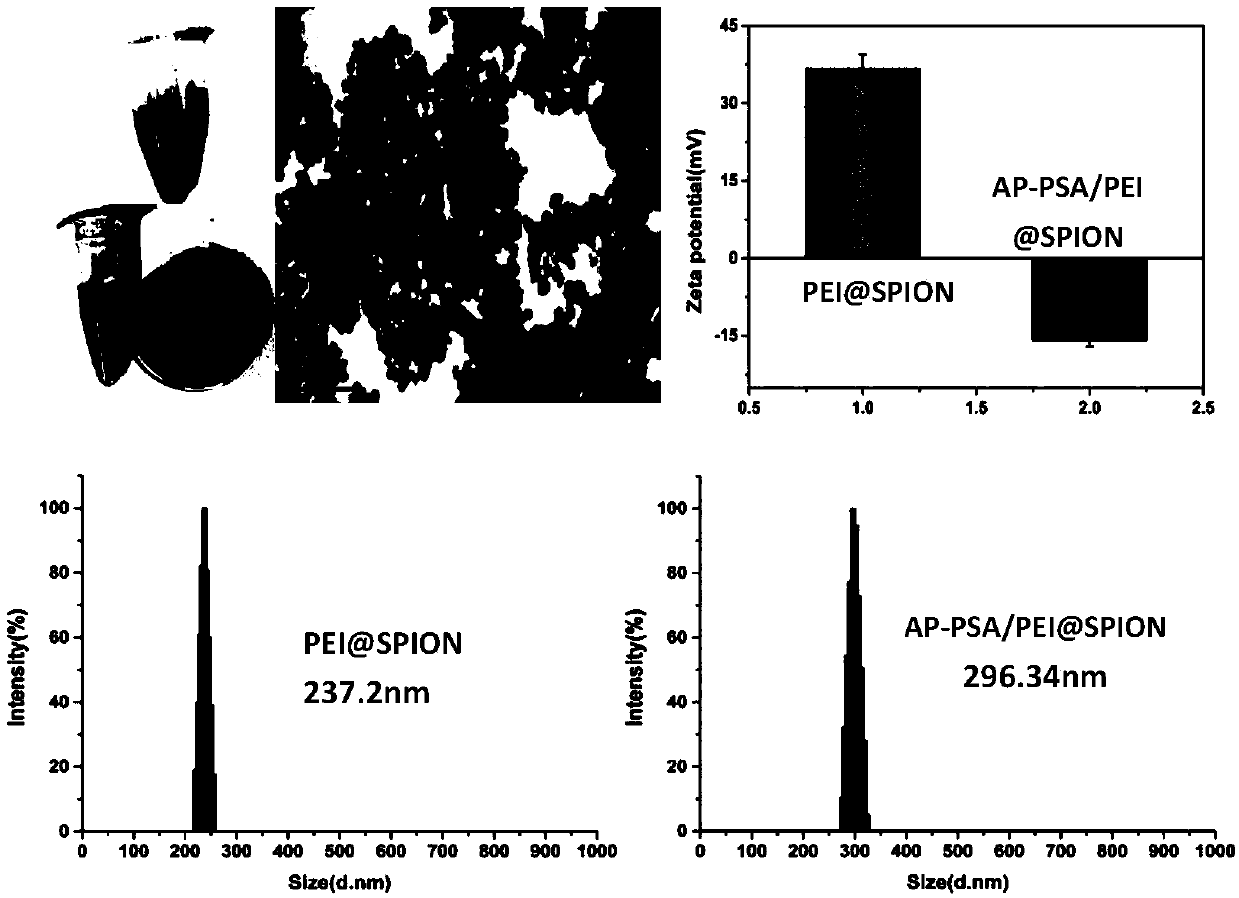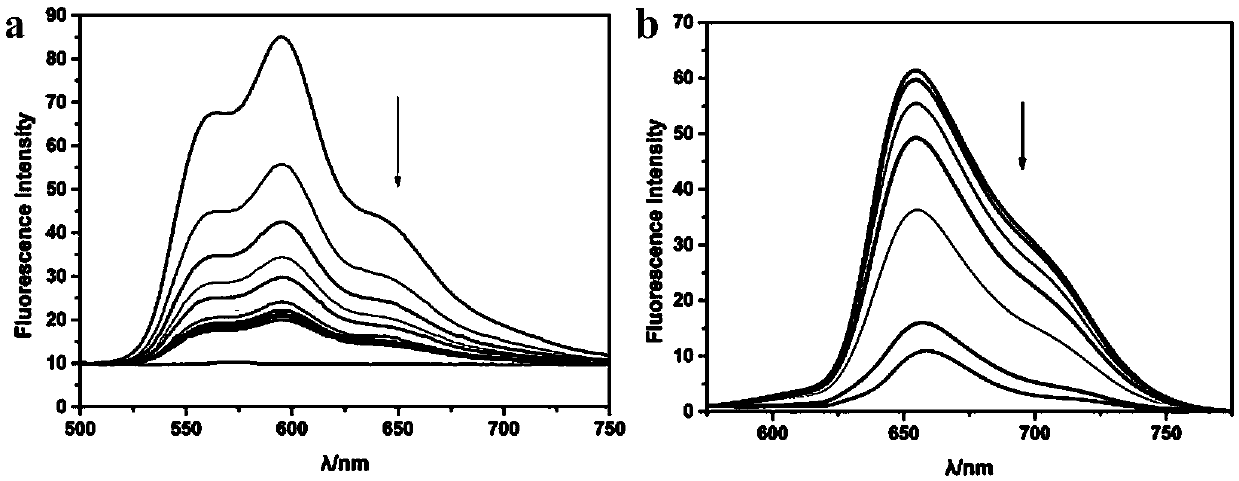Targeted anti-tumor drug system for drug-resistant tumor cells and construction method thereof
An anti-tumor drug and tumor cell technology, applied in the field of targeted anti-tumor drug system and its construction, can solve the problems of affecting the normal metabolism of chemotherapeutic drugs, side effects, and toxic effects, and achieve triple inhibition of drug-resistant tumor proliferation and high specificity. , the effect of increasing biocompatibility
- Summary
- Abstract
- Description
- Claims
- Application Information
AI Technical Summary
Problems solved by technology
Method used
Image
Examples
Embodiment 1
[0056] Preparation and Characterization of DNM&TMPyP&AP-PSA / PEI@SPION Nanosystem
[0057] 1. Investigation of the binding ability of AP-PSA and PEI@SPION - agarose gel test
[0058] Agarose gel retardation assay was used to determine the binding capacity of PEI@SPION and AP-PSA. AP-PSA was mixed with PEI@SPION to obtain mixtures with ratios (wt / wt) of 1:30, 1:45, 1:90. The mixture was incubated at room temperature for 1 h to form complexes. The formation of nanocomplexes was confirmed by electrophoresis at 110V for 30 minutes in 2% agarose gel, TBE buffer, observed and photographed by a gel imaging system.
[0059] 2. Determination of the immobilization ratio of DNM, TMPYP and hybrid chain (AP-PSA)
[0060] Both DNM and TMPYP have certain fluorescence. When combined with DNA, the fluorescence is quenched. This characteristic was used to determine the immobilization of AP-PSA on DNM and TMPYP.
[0061] Dissolve 10 μl of DNM with a concentration of 189.566 μmol / l in 2.5 ml ...
Embodiment 2
[0073] ABTS experiment and circular dichroism experiment of embodiment 2 hybrid chain AP-PSA
[0074] In order to verify that the nucleic acid aptamer forms a G quadruplex structure after annealing at 90°C in the presence of potassium ions, the ABTS method was used for testing. ABTS, 2,2'-azino-bis(3-ethylbenzothiazole 6-sulfonic acid), is the chromogenic substrate of peroxidase, which loses electrons in the presence of hydrogen peroxide to show color changes and Accumulates to form a green soluble product. There are absorption peaks at 405nm and 650nm wavelengths, which have the advantages of high sensitivity and low background. It is the most commonly used substrate for HRP conjugates. Incubate the non-annealed AP-PSA and the annealed AP-PSA hybrid chain with hemin (Hemin) for 120 hours, respectively, add 100ul of the mixed reaction solution to the microwells in the dark, and develop the color in the dark for 30 minutes Left and right, add 50 μl of reaction termination so...
experiment example 3
[0078] cell culture
[0079] The cell lines MCF-7 cells (human breast cancer cells) and doxorubicin-resistant MCF-7 / ADR were obtained from the School of Basic Science, Guangdong Pharmaceutical University. For MCF-7 / ADR cells, first culture MCF-7 / ADR cells in a medium containing 500ng / ml DOX to gradually adapt to their drug resistance, and then increase the concentration of DOX to 1000ng / ml in the subculture medium. RPMI 1640 medium containing 10% FBS, 1% penicillin-streptomycin was used as the growth environment, at 37°C, 5% CO 2 , cultured in a cell culture incubator under optimum humidity conditions, replaced the medium every 2-3 days and passaged once, and finally selected cells in the logarithmic growth phase in good condition for the experiment.
[0080] Prussian blue dye
[0081] The uptake of magnetic nanoparticles in cells can be verified by Prussian blue staining experiments. MCF-7 and MCF-7 / ADR cells were seeded in 6-well plates, cultured for 24 hours, and normal m...
PUM
 Login to View More
Login to View More Abstract
Description
Claims
Application Information
 Login to View More
Login to View More - R&D
- Intellectual Property
- Life Sciences
- Materials
- Tech Scout
- Unparalleled Data Quality
- Higher Quality Content
- 60% Fewer Hallucinations
Browse by: Latest US Patents, China's latest patents, Technical Efficacy Thesaurus, Application Domain, Technology Topic, Popular Technical Reports.
© 2025 PatSnap. All rights reserved.Legal|Privacy policy|Modern Slavery Act Transparency Statement|Sitemap|About US| Contact US: help@patsnap.com



